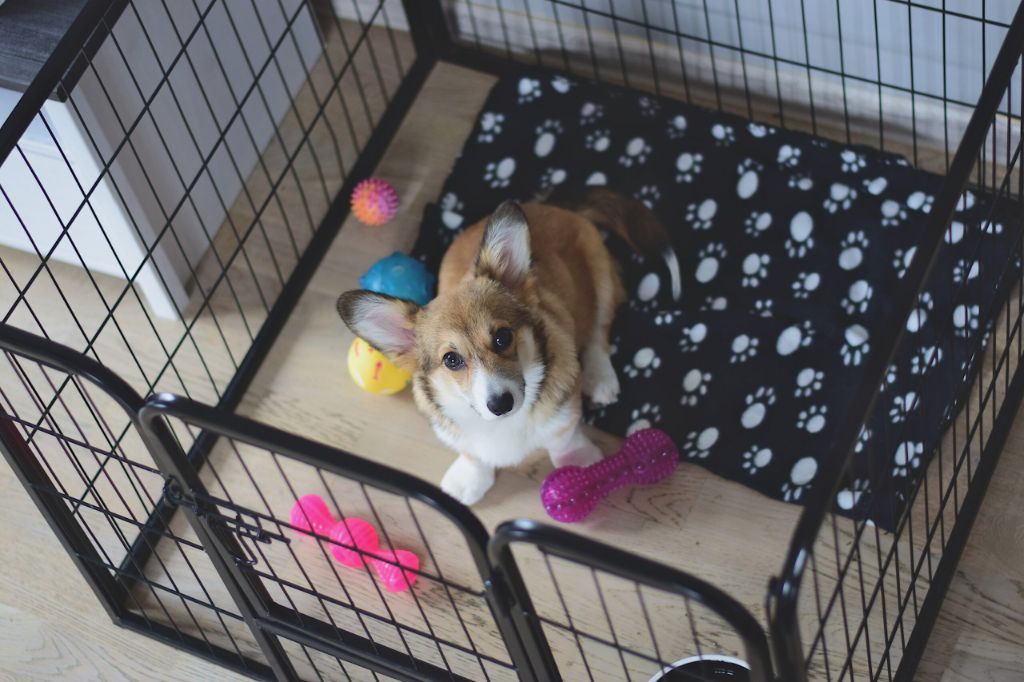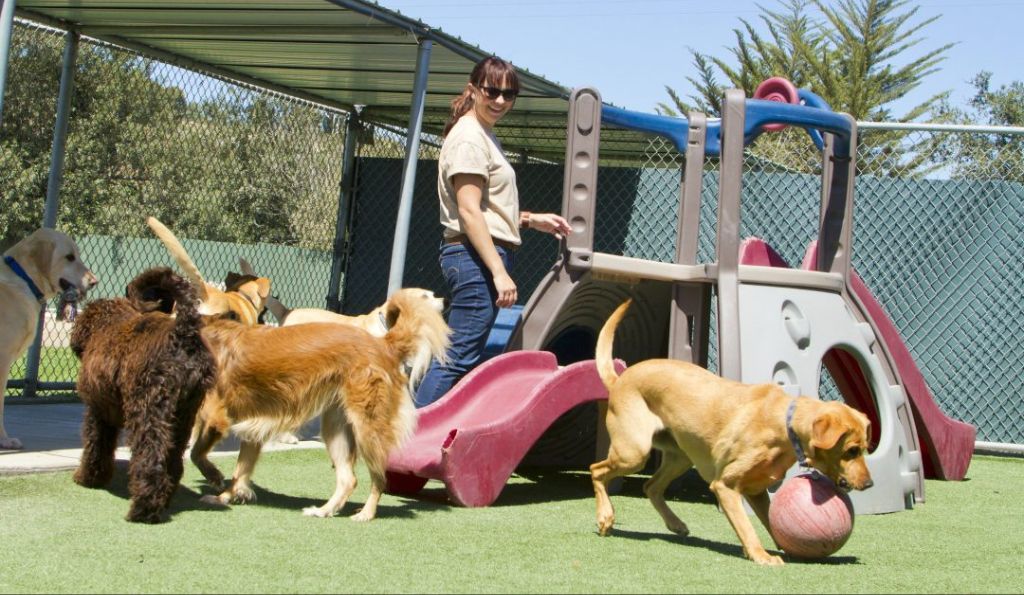Assess your lifestyle and job flexibility
When deciding if you can work while owning a dog, first assess your lifestyle and job flexibility. An important consideration is how much time you spend away from home each day. Do you work standard 9-5 office hours, or do you have a more flexible schedule? Having a more flexible work situation where you can work remotely some days makes owning a dog much easier.
According to experts, a good rule of thumb is that dogs shouldn’t be left alone for more than 4-6 hours per day. If you work long hours outside the home, this likely won’t provide enough time with your dog. However, if your job allows you to work from home several days a week or on a flexible schedule, you may be able to make owning a dog work.
Take an honest look at your daily and weekly schedule. Do you have extended periods of time where you need to be out of the house each day? Or do you have large blocks of time you can spend at home with your dog? Understanding your schedule and lifestyle will help determine if adding a dog to your life is feasible.
Consider your dog’s needs
When deciding if you can work while owning a dog, it’s important to honestly assess your dog’s needs for energy, space, exercise and attention. Certain breeds like Border Collies and Jack Russell Terriers are very energetic and require a lot of activity, while breeds like French Bulldogs and Chihuahuas have lower exercise requirements.
Make sure your living situation provides enough indoor and outdoor space for your dog to move around comfortably. High energy dogs may not do well cooped up in a small apartment all day. Provide appropriate outlets for exercise – active breeds may need long walks, runs or intense play sessions each day.
Even lower energy dogs need some activity and enrichment. Schedule regular potty breaks. Food puzzles, chew toys and training games can provide mental stimulation. If your schedule means your dog will spend long periods alone, consider doggy daycare a few days a week.

Give your dog affection and quality time when you are home. Make sure they have fresh water, a comfy bed, and safe chew toys. By understanding your dog’s needs and adapting your lifestyle, you can make owning a dog while working possible.
Train your dog
Housebreaking a puppy takes time and patience. Take your puppy outside frequently and praise them when they go to the bathroom outside. An 8-week old puppy needs to go out every 30-60 minutes as well as shortly after eating, drinking, playing or sleeping. Be consistent and stick to a schedule. Consider paper training or using pee pads if you live in an apartment and can’t get outside easily. Never scold a puppy for accidents – just clean it thoroughly with an enzyme cleaner to avoid repeats in the same spot.
Begin basic obedience training early on. Focus on simple commands like sit, stay, come, down, leave it, drop it, and heel. Keep training sessions short, positive and rewarding with treats and praise. Work on obedience commands for 5-10 minutes several times a day. Consider enrolling your puppy in a training class for socialization and more structured learning. Crate training can also help reinforce good behavior when you are away.
Crate training utilizes a dog’s natural instinct to not soil their den. Introduce the crate slowly with treats and praise so your puppy learns to see it as a safe space. Limit time in the crate to short intervals at first, then gradually increase the duration. Provide water, safe chew toys, and pee pads in the crate. The general rule is a puppy can hold their bladder one hour for every month of age. So a 3 month old puppy needs a potty break every 3 hours or less when crated. Be sure to allow frequent potty breaks when you return.

Prepare your home
One of the most important steps for being able to work while owning a dog is properly preparing your home. This involves dog-proofing your house and yard to keep your dog safe and prevent destruction when you’re working and can’t supervise them. Some tips for dog-proofing include:
Dog-proof fences: Check that your fence has no weak spots or holes your dog could escape through. Bury chicken wire at the base if your dog is prone to digging under fences. Use hot wire or coyote rollers if your dog is adept at climbing or jumping fences. Ensure any gates are securely latched.
Baby gates: Use baby gates to block off rooms or areas you don’t want your dog accessing when you’re working. Stairway gates can prevent falls.
Crates: Use a crate to contain your dog when you’re unable to supervise them. Place it in a quiet area like your bedroom or home office.
Remove hazards: Pick up any choking hazards like rubber bands or strings. Place trash cans out of reach. Keep household cleaners and chemicals locked away. Tidy away shoes, clothes, and valuables your dog could chew.
Dog toys: Provide plenty of safe, durable chew toys to keep your dog entertained.
Chew deterrents: Use bitter apple spray on furniture, baseboards, plants, and electrical cords that your dog likes to chew (Source).
Exercise and enrichment
Dogs need daily physical and mental stimulation, so it’s important to incorporate exercise and enrichment into their routine when you’re at work. Going for walks is a great way to get your dog moving and explore new sights and smells. Try to walk your dog before you leave for work and/or have a dog walker take them out midday. Interactive toys such as puzzle feeders, snuffle mats, and Kongs filled with treats can keep your dog happily occupied while home alone. Rotate different puzzle toys to keep things interesting and challenging. You can also hide treats around the house for your dog to hunt and find. Ongoing training provides mental stimulation, so practice basic cues or teach new tricks during your morning and evening playtime. Socializing your dog by arranging playdates, doggy daycare, or visits with friends and family while you’re gone can provide companionship and activity.
According to research by Pooches at Play, environmental enrichment is vital for dogs left home alone to provide mental and physical stimulation. Rotating puzzle toys, hide-and-seek games with treats, snuffle mats, and food-dispensing toys are great ways to keep your dog entertained and prevent boredom (https://poochesatplay.com/toys-accessories/environmental-enrichment-dogs-home-alone/). The Wildest recommends trying interactive feeding toys, hiding treats around the house, providing chew toys, and playing hide-and-seek to occupy your dog at home (https://www.thewildest.com/dog-lifestyle/entertainment-options-home-alone-dog).

Feeding Schedule
Establishing a consistent feeding schedule for your dog is crucial when working and owning a dog. Most experts recommend feeding adult dogs twice a day, about 12 hours apart (VCAA). Common feeding times are in the morning before you leave for work and in the evening when you return home. Puppies under 5 months may need three feedings a day.
To maintain your dog’s feeding schedule while at work, consider getting an automatic feeder. These can dispense your dog’s meals at preset times. Just fill the feeder before leaving in the morning. This allows your dog to eat on a consistent schedule, avoiding issues like overeating when the food is available all day.
Additionally, always leave fresh water available for your dog during the day. Use spill-proof bowls or a water dispenser. Hire a pet sitter or dog walker to check water levels and refresh if needed.
Pet sitters and dog walkers
Hiring a pet sitter or dog walker is a great way to make sure your dog gets enough exercise and potty breaks while you’re at work. Pet sitters and walkers can come by your home during the day to take your dog out for a walk, play with them, and make sure they have fresh food and water. Rates vary based on your location and the services provided. According to HomeGuide, dog walkers typically charge between $20-$35 for 30 minutes, and $30-$60 per hour. Options include:
- 30-minute midday dog walking visit
- 1-hour midday visit with walking and play time
- All-day care with walks, play time, and feedings
When interviewing pet sitters or dog walkers, look for individuals who are insured and bonded for your protection. Ask for references and check reviews. Make sure to find someone your dog likes and trusts. Test out the service initially while you’re home so you can evaluate how well it works for your dog.
Doggy daycare
Doggy daycare provides a supervised environment for dogs to socialize and play while their owners are at work. This can be a great option for high energy dogs or puppies who need more stimulation and activity. According to Rover’s Cost of Pet Parenthood Survey, doggy daycare can cost anywhere between $40-280 [1]. The average cost for a full day is $12-38 and a half day is $6-25 [2].
The main pros of doggy daycare are socialization, exercise, and preventing separation anxiety or destructive behaviors at home alone. It allows dogs to play freely in a safe space. However, some cons are the ongoing cost and the potential for injury if dogs play too roughly. There is also exposure to illnesses from other dogs. Some dogs may find the environment overstimulating.

When choosing a facility, look for cleanliness, trained staff, small group sizes, and screenings for vaccinations. Ask about policies for troublesome behaviors and additional services like training or boarding. While pricey, doggy daycare can be worth it for the right dog if it allows the owner to work comfortably.
[1] https://www.rover.com/blog/how-much-does-doggy-daycare-cost/
[2] https://luckydogbarkandbrew.com/blog-news/the-average-cost-of-doggy-daycare-and-how-to-know-if-its-worth-it/
Working remotely
Working from home while owning a dog is certainly possible with the right preparations and flexibility. Many companies now offer remote work options that allow employees to work from home some or all days of the week. This provides the flexibility needed to balance work and dog ownership.
According to the Forbes Business Council, effective remote work policies outline expectations for employees working outside the office, while providing the flexibility they need https://www.forbes.com/sites/forbesbusinesscouncil/2022/12/23/the-dos-and-donts-of-a-remote-work-policy/. Policies may allow employees to work remotely full-time or on certain days. This gives dog owners the option to stay home some days to care for their pet.
If your job does not currently offer remote work, consider speaking with your manager about a partial or trial remote work arrangement. Emphasize the benefits it offers both you and the company. With proper preparations, remote work can allow dog owners to be productive while meeting their pet’s needs.
Other tips
Crating your dog while you’re at work can help ease anxiety and prevent destructive behaviors. Be sure to get an appropriately sized crate and introduce it gradually with positive reinforcement. Place comfortable bedding inside and provide interactive food toys to keep your dog occupied. Limit crate time to under 4 hours at a time.[1]
Consider setting up a pet camera so you can check on your dog remotely. Monitoring your dog’s behavior can help put your mind at ease. Just be sure your WiFi connection is reliable.[2]
Leave out comforting items like worn t-shirts with your scent or a favorite toy. This can help ease separation anxiety. Providing mental stimulation is key to keeping your dog happy while home alone.[3]
